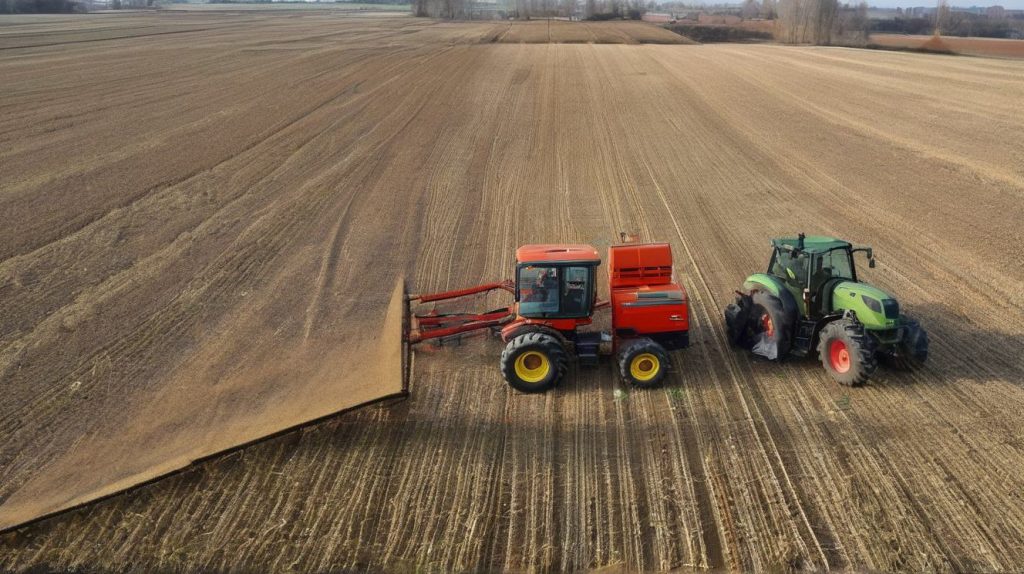How to Repair Common Issues in Agricultural Equipment
ArticleAgricultural equipment like tractors, combines, and harvesting machines are essential tools on the farm. However, frequent use and exposure to tough conditions can lead to breakdowns and equipment issues. Knowing how to troubleshoot and repair common problems can save time and reduce costly downtime. This guide covers essential tips for repairing agricultural machinery, maintaining farm equipment, and recognizing signs that repairs are needed.
Troubleshooting Tractor Problems
Tractors are the backbone of many farming operations, but they can develop issues over time. Common problems include starting issues, power loss, and hydraulic malfunctions. To troubleshoot, start by checking the fuel and air filters, as clogs can affect performance. If the tractor won’t start, inspect the battery, starter, and ignition switch. For hydraulic problems, examine hoses and connectors for leaks or kinks. Routine inspections and proper upkeep can prevent many tractor issues from becoming major repairs.
Common Agricultural Equipment Repairs
Agricultural equipment can face various repairs due to constant use and exposure to dirt, moisture, and heavy loads. Common repairs include replacing worn-out belts, hoses, or hydraulic lines. Tires often need maintenance due to rough terrain, so regularly check for low pressure or punctures. Another frequent issue is damage to PTO (power take-off) shafts, which power attachments like mowers and balers. Regularly inspecting these components and keeping them clean can reduce the need for emergency repairs.
Farm Machinery Maintenance Tips
Regular maintenance of farm machinery is crucial for keeping equipment in good condition. Start by creating a maintenance schedule based on each machine’s usage and manufacturer guidelines. Regularly check oil and fluid levels, replace air and fuel filters, and grease moving parts to reduce friction and wear. Keep machinery clean by removing dirt and debris after use, as buildup can damage components over time. A consistent maintenance routine can extend the life of your equipment and prevent breakdowns.
Fixing Broken Farm Equipment
Fixing broken farm equipment requires both technical knowledge and practical skills. Begin by identifying the problem and assessing whether it’s something you can repair yourself. For instance, replacing a belt or hydraulic hose is manageable for most operators, while complex electrical issues may require a professional. Always consult the equipment’s manual and follow safety protocols when working on machinery. Having essential tools, like wrenches, pliers, and spare parts, on hand can make repairs faster and easier.
How to Repair Agricultural Machinery
Basic repairs on agricultural machinery often involve replacing worn parts or addressing mechanical issues. For example, if a machine’s engine overheats, check the coolant level and clean the radiator to ensure proper airflow. If gears or transmission systems are causing issues, inspect for leaks or worn components, and replace parts as necessary. Lubricating all moving parts regularly prevents metal-on-metal wear, which can lead to larger, more costly repairs if neglected.
Issues with Harvesting Equipment
Harvesting equipment, such as combines, faces intense use during harvest season and is prone to specific issues. Common problems include clogged or broken threshing mechanisms, worn blades, and jammed conveyors. To maintain combines and other harvesting machinery, regularly check and clean the headers, adjust blades, and inspect belts and pulleys for wear. Address any issues immediately to prevent further damage and ensure efficiency during the critical harvest period.

Maintenance for Tractors and Combines
Tractors and combines require detailed maintenance due to their extensive use in fieldwork. For tractors, change the oil and replace filters regularly, and check tire pressure and battery health. Combines have more specialized needs, such as cleaning the threshing cylinder and adjusting concaves for optimal grain separation. Maintaining the grain tank and augers can also prevent clogs and enhance harvesting efficiency. Scheduling regular maintenance for both tractors and combines ensures they are always ready for heavy-duty use.
Agricultural Equipment Breakdowns
Agricultural equipment breakdowns can halt farm operations and lead to financial losses. To prevent breakdowns, inspect machinery frequently for wear and address minor issues immediately. Lubricating components, replacing damaged parts, and cleaning equipment regularly can significantly reduce breakdown risks. Additionally, having a few essential spare parts on hand can minimize downtime when breakdowns do occur, allowing for quicker repairs and resumption of work.
Preventive Care for Farm Machinery
Preventive care is one of the most effective ways to keep farm machinery in top condition. Establish a preventive maintenance schedule that includes tasks such as fluid checks, filter replacements, and tire inspections. Regularly inspect hydraulic systems and electrical wiring for leaks or loose connections. Preventive care also involves monitoring equipment performance—if you notice reduced power or efficiency, it’s likely time for a more thorough inspection. Consistent preventive maintenance reduces unexpected repairs and extends equipment life.
Signs Farm Equipment Needs Repair
Knowing the signs that farm equipment needs repair can help prevent further damage and costly breakdowns. Watch for symptoms like strange noises, vibrations, reduced power, or leaks. Unusual smells, such as burning oil, also indicate that repairs are needed. If a machine is harder to start or frequently stalls, these are early signs of potential engine or fuel system problems. Addressing these issues promptly ensures equipment remains safe and operational.
In conclusion, maintaining and repairing agricultural equipment is essential for efficient and reliable farm operations. By performing regular maintenance, recognizing common issues, and following repair tips, farmers can keep their machinery in top condition, reduce downtime, and save on repair costs. Preventive care and timely repairs not only protect valuable equipment investments but also contribute to a smoother, more productive farming season.
